#weaving loom
Text

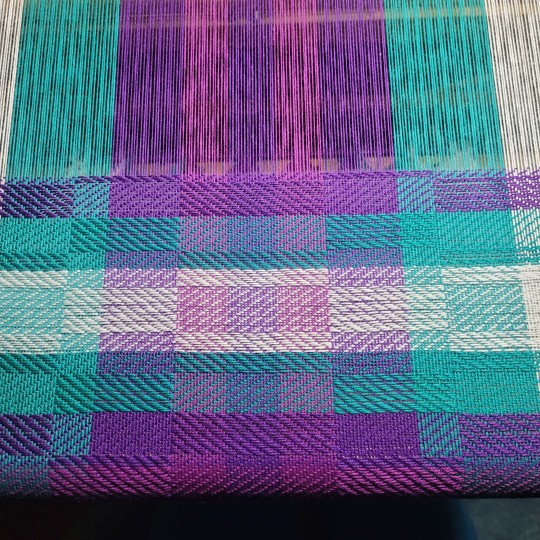

I LIVE I SWEAR. Have this 90's soda cup inspired warp as a proof of life lol.
#its been crazy!!!!#i moved states and finally am settling in#fibercraft#weaving#handcraft#loom weaving#weaving loom#weaving asmr#asmr
10K notes
·
View notes
Text
found this tutorial on how to make a 4 shaft weaving loom out of cardboard boxes, tape, glue, skewers, string, and a few other odds and ends.
it may not look pretty, but as an introduction to multi shaft weaving this could be a fun project that doesn't break the bank.
388 notes
·
View notes
Text

People love my sheep tablet woven band, it seems. Guess what, I'm making more! On my brand new, 5 meter loom (thanks dad)! It really is so damn cute...
Instructions (German): https://www.vianostra.at/scriptorium/anleitungen/webrahmen.htm
128 notes
·
View notes
Text
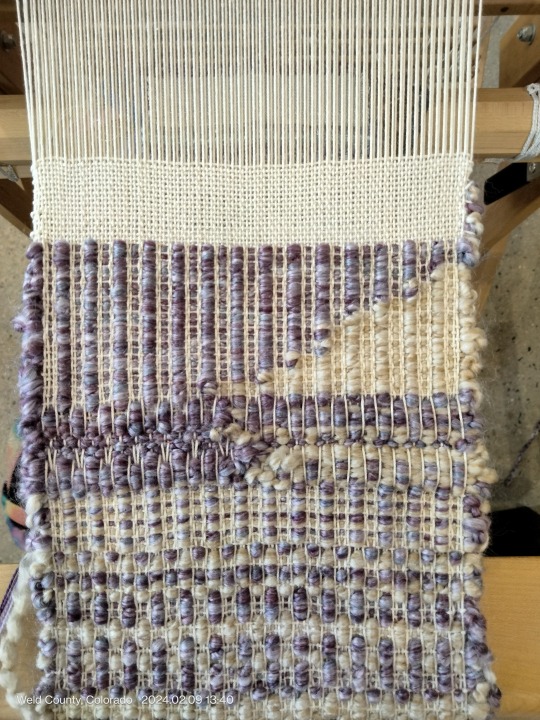
I figured out how to do a diagonal color shift on the loom today. The teacher wasn't in the room a lot so I figured it out by myself and I really like how it turned out, I'm excited to do more samples with this technique.
I'm using Tabby weave to give it structure while I do just block weaving on the same peddle back and forth
#no id#I do not know how to give my weaving an image description apologies for that#Weaving#fibre arts#fiber arts#fiber crafts#fibercraft#Four shaft loom#Mine#Art by me#weaving loom#I'm so obsessed
24 notes
·
View notes
Text

Sigourney Weaver calls to me today, she's feeling neglected. I need to finish this weave before Christmas time....
#weaving#loom#weaving loom#floor loom#textiles#fiber arts#fiber crafts#yarnblr#with the wool#my woolly wonders
22 notes
·
View notes
Text
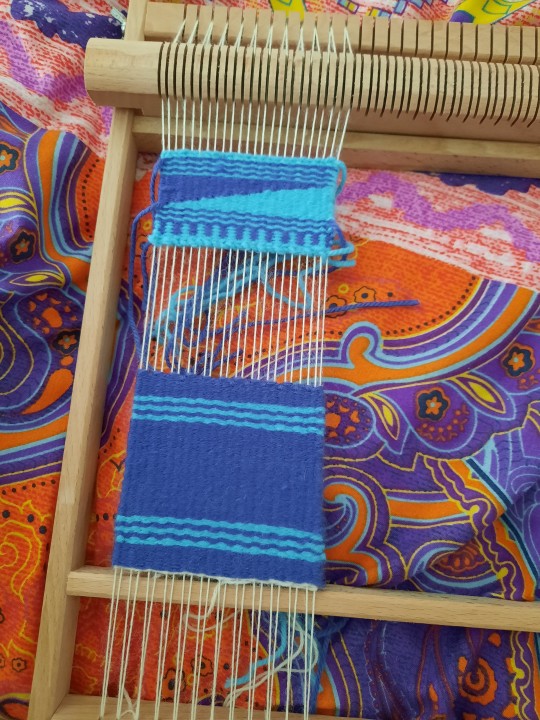
I bought myself a loom yesterday and I love it so much! I used to love weaving as a kid but never got very far cause nobody bothered to help me learn. I feel a little guilty bc I'm just weaving for the fun of it and not making anything "useful", so capatalistic brain worms are telling me it's a "waste of time and money". But I'm trying to accept that something being fun can be justification enough.
26 notes
·
View notes
Text

Weaving time!!
28 notes
·
View notes
Text
This is so pretty 😍

#rigid heddle loom#weaving loom#weavingcommunity#plain weave#weave#weaving#weavingart#hand weaving#weavingloom#yarnlove#knit picks#hand woven
30 notes
·
View notes
Text
Weaving update: I want to absolutely be done with this but also, I mean, it's so pretty
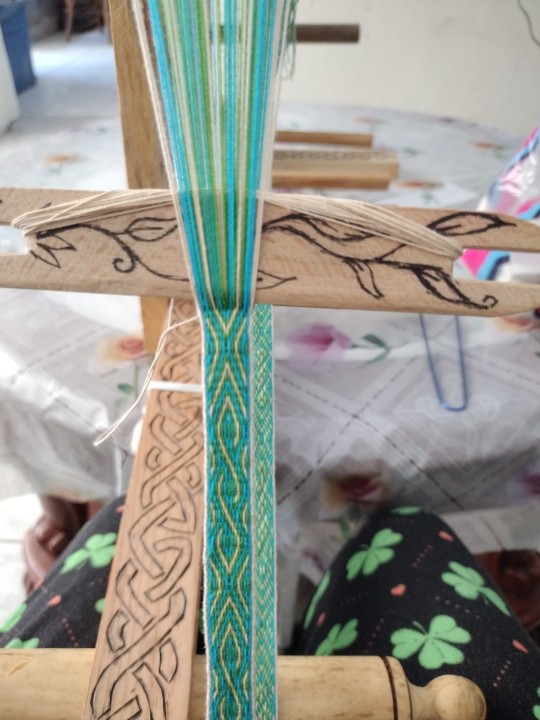

#hobbit talks#andy rambles#andy does crafting#adventures in tablet weaving#tablet weaving#card weaving#textiles#weaving loom#inkle loom
21 notes
·
View notes
Photo

Waving loom - Madhya Pradesh, 2013
#picofthenight#travel#india#original photographers#photographers on tumblr#weaving loom#purple aesthetic#still life#interior photography#photoofthenight
36 notes
·
View notes
Text
Hey question for my weavers.
How do y’all measure your finished cloth?
Because I have been just unwinding it, measuring with a tape measure and rewinding but I feel like it never winds on as nicely and i feel like it always makes the tension kinda wonky.
#granted my tension just is kinda wonky to start with#but I wanna start doing loom shaped clothing and knowing how much fabric there is is critical since u are trying to minimize cutting#weaving#yarn#handmade#knitting#handweaving#loom#weaving loom
3 notes
·
View notes
Text
Getting another batch of the rainbow fabric worked on as of 1/5/24, going to use this batch to make a bunch more of the little zipper bags and some new *experiments* I'm hoping turn out cool!
Have some loom ASMR!
If you have weaving questions, leave them on this post and I'll do a video at the loom answering the best I can!
#the puppy was being a lil fussy in the background of this one#but shes 8 weeks old that is expected lol#weaving loom#weaving#fibercraft#handcraft#handweaving#handwoven#loom weaving#rainbow fabric#loom asmr#weaving asmr
3K notes
·
View notes
Text
For all the people excited about weaving via my earlier post
tbh you can make a loom out of just about anything. you just need something to hold the warp and something to separate the sheds, a shuttle, and something to beat the weft with (like a really long shuttle or a separate stick)
Below is a picture of my great grandmother weaving a chinchorro (hammock). Wayuu weaving is a little different than what you're probably used to, but the basic thing to understand is the same. There's a bar at the top and a bar at the bottom, she's using her hands and small balls of yarn to wind the weft through, and tie warps together to make patterned gaps. No shuttle is involved.
But if you wanted to you could easily add pickup bars (basically a long stick and shuttles to this type of setup and weave that way. It'd basically be a tapestry loom setup, but tbh you can weave just about anything, you just have to get creative with how you manage the sheds.
I'd look up backstrap looms and translate the way the different bars are set in place for this kind of a setup. All you'd need is dowels or sticks of some sort for it. You could figure out a mini one on a box or a picture frame. Abuela had a floor to ceiling setup on one of the walls that was just basically a frame.

I wish I had photos of some of the chinchorros she made, they were beautiful. My uncle has a video somewhere of her weaving one with a horse on it and the artistry to it was absolutely gorgeous. I wish I'd gotten the chance to learn from her tbh, she was a brilliant artist from the work I've been able to see. I think it was cos of her that I inherited my love of weaving and textiles so much.
24 notes
·
View notes
Text


You vs. the guy she told you not to worry about.
Tablet weaving loom edition.
I love my ashford inkle loom (left) to bits and we have made many beautiful things together, but he can only produce 2,30m finished band at the most. My new custom loom (thanks Papa!) gets me 5,5m. He's a lot more work and I've not yet found a practical way to use him, but we'll get there.
13 notes
·
View notes
Text
Different Parts of Loom and Their Functions

A loom is a mechanical tool used to weave fabric by inserting yarn for the warp and weft. The main mechanical weaving tool in weaving machine technology is the loom. However, a variety of looms are utilized for weaving tasks. Altering the machine setting also results in the production of various types of designed fabric.
A loom is a mechanical equipment that mechanically interweaves threads to create fabrics that can be used for industrial or dress-related purposes. Given that looms are used to manufacture cloth. Man first utilized a handloom to produce cloth in the early days of fabric manufacturing. With the advancement of the loom, the weaving mechanism altered over time. In keeping with modern times, the looms used to make fabrics have high production rates as well as complicated design production rates.
Shaft, Heald:
The shedding mechanism is included in this section. A heald shaft is made in the textile weaving industry utilizing aluminum or wood-based metals. The ends of the warp sheet pass through a number of heddle wires that it carries. The words "heald shafts" and "heald staves" are also used to describe the shafts. The total number of heald shafts varies depending on the weave's warp repetition. The weave's drafting strategy during weaving determines it.
Sley of Lay:
It is composed of wood and consists of a reed cap, a metal sword carried at either end, and the sley race board or sley race. The sley mechanism oscillates. Sley is in charge of using the beat-up motion to drive the final weft pick to the fabric's fell. The sley moves more quickly while traveling near the edge of the cloth and less quickly when going away from it. "Eccentricity of the sley" is the phrase used to describe this uneven movement. In textile weaving, sley is required to complete the beat-up and to allow enough time for the shuttle to pass through the warp shed.
Shuttle
Shuttles are used in textile weaving as weft carriers to help interlace the weft and warp threads to create cloth. A wooden shuttle that travels from one end of the loom to the other is used. The shuttle moves between the top and bottom levels of the warp sheet as it travels along the wooden sley race. The shuttle enters a shuttle box that is installed at either end of the loom after passing through the warp shed. It should be mentioned that a shuttle typically weighs 0.45 kg.
Picker:
A picker is a piece that can be made of leather or synthetic material. Picker can be positioned on one of the spindles or grooves in the shuttle box. The shuttle is driven by a picker as it moves between boxes. It withstands the force of the shuttle when it enters the box as well.
Reed:
A reed cap secures the metallic comb known as a reed to the sley. Dents are the spaces between wires in a shuttle, which are used in the textile industry. The number of dents in two inches determines the reed's count. In textile weaving, there are various varieties of reed, including regular reed, expanding reed, gauze reed, and V reed.
Reed forces the final weft pick to be laid against the fallen cloth. Together with the healds, it determines the fabric's fineness. The shuttle is guided by a reed as it moves from one end of the loom to the other. It aids in keeping the warp threads in place.
Back Beam:
The backrest is another name for the back beam. Above the weaver's beam, it is positioned. Back Beams can be either fixed or floating. In the first instance, the backrest only serves as a guide for the warp sheet coming from the weaver's beam. In the second scenario, the back beam serves as both a sensor and a guide for detecting the warp strain.
Conclusion:
It is critical to know and understand the loom one is using, in order to learn more and better about it from warp beam to reed, one can only know what issue the machine is having that is causing the problem and how to fix it. While it can be difficult to choose the right machine to ensure that the fabric is even better, they can always rely on Weavetech in the meantime. The fine technology combined with highly advanced tools ensures that the fabric is as fine and detailed as possible. Put your textile in the hands of Weavetech.
3 notes
·
View notes
Text
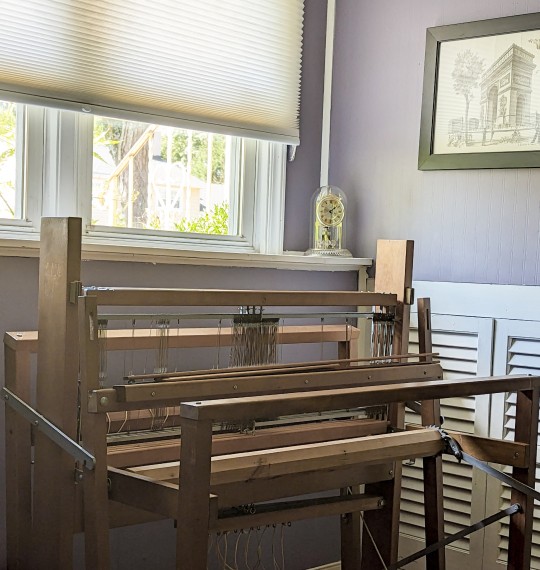
Give a warm welcome to Heddle (Hedy) Lamarr. Newest addition to the loom room. My mom is pleased as punch with her present. We just picked it up and brought it home today. She needs some work so I will be emailing LeClerc for some part sourcing!
#weaving#weaving loom#textiles#fiber arts#fiber crafts#fiber art#crafting#with the wool#my woolly wonders
5 notes
·
View notes